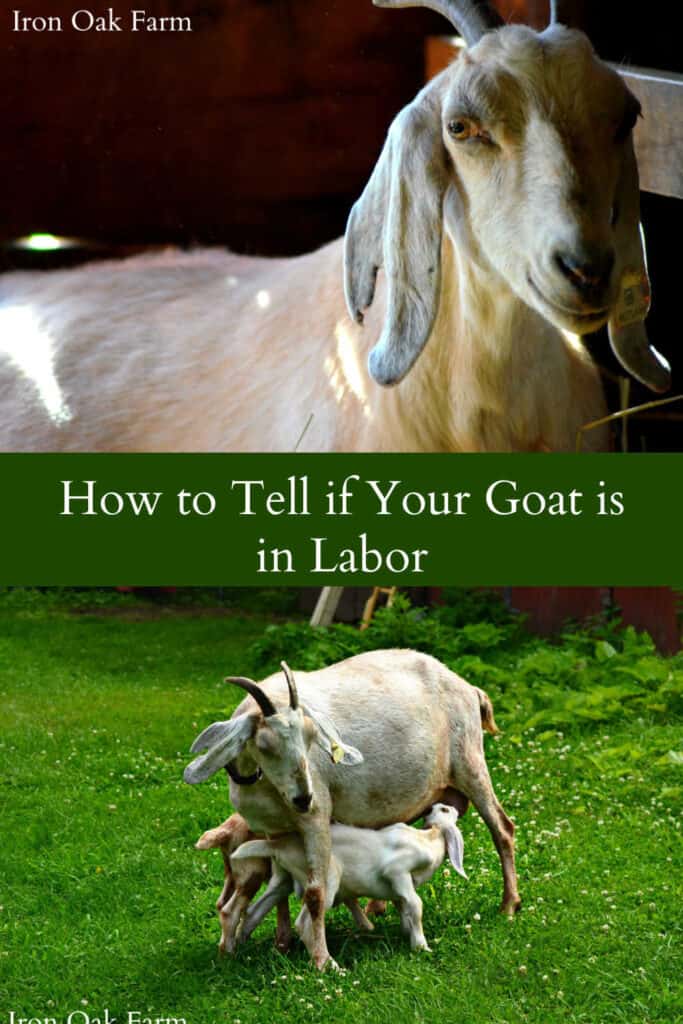How to Tell if Your Goat is in Labor
It's important to know how to tell if your goat is in labor so that you can be there in the rare case that she, or her kids, need some assistance. This is especially good to know if the spring weather is still a bit chilly. Not only that, but birth is a miraculous and exciting thing to witness. I know I'm always a little bummed if I missed the birth of any of the animals on our farm. At the end of this post you should have a pretty good understanding of labor signs in your goat, even if you're a beginner.
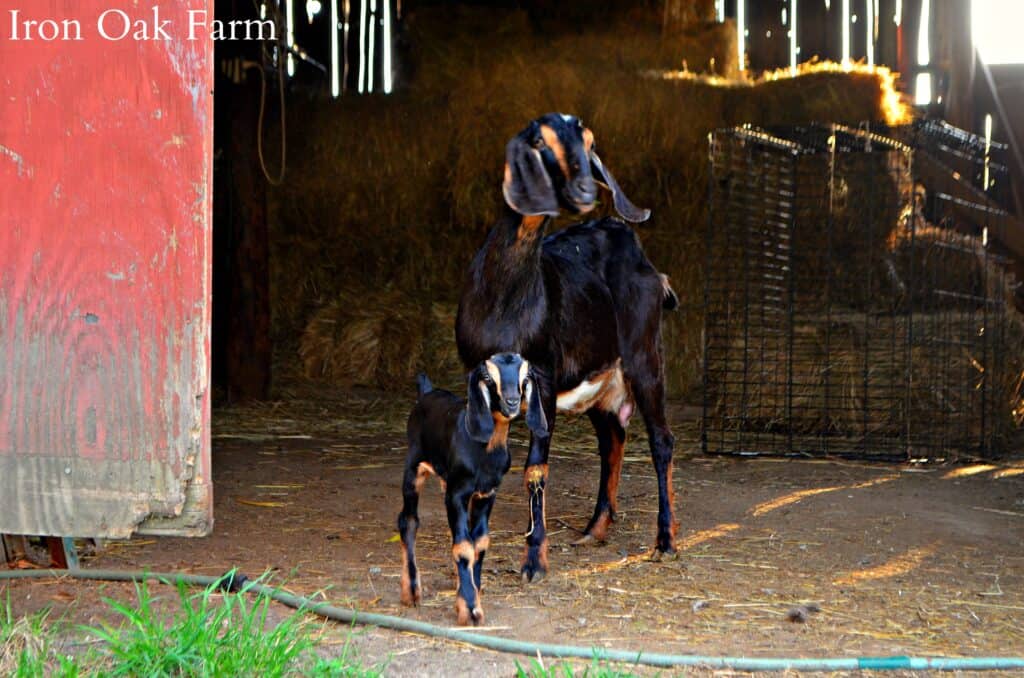


Most of the time goats will kid all on their own without assistance. Many times I've gone out to the barn during kidding season to find babies already standing and nursing from mom. However, if you live in a climate like ours where the early spring can hold freezing temps, it's a good idea to be available when your goat goes in labor. Kids can't regulate their body temperature so it's very easy for them to slip into hypothermia.
There are also a few things that need to be done within the first hour or two after a kid is born. Knowing that your goat is in labor can help you be sure to get these things done so you have the most success with your kidding season.
A barn cam
A barn cam is an amazing tool during kidding season. It gives you the ability to check on your goats without trudging out to the barn every hour or two. They range in price from about $50 to around $200 and go up from there.



An alarm clock
If you don't have a barn camera then it's a good idea to start barn checks starting the week of their due date. You should check every 2-4 hours, more often if the weather is cold. As time progresses those checks should get closer and closer together. My husband and I take shifts at night durring kidding season.
Calender
Keeping good records of the dates that your goats were exposed will help you to know within a week or two when your goats will be kidding. It also helps to not run your bucks with your does year round. This way you have a good understanding as to when your girls will be kidding.
Late Pregnancy/Pre Labor
As your goat gets closer to her due date you might notice some changes in her behavior. Each goat is different but there are some definite signs that you can watch for. These symptoms can go on for more than a week. You can tell if your goat is in pre labor is she is:
- Arching and stretching of the back
- Yawning frequently
- Frequent urination
- Lengthened or awkward tail position
- Pawing at the ground
- Gathering bedding, moving things around with her nose or “nesting”
- Waddling when she walks, with a spread to the hind legs
- Difficulty getting comfortable while lying down
- Difficulty getting up from a laying position
- Rolling or extending the neck while laying
- Moaning while breathing
- Udder formation
- Teat lengthening and growing in circumference
- Pregnancy trance (more below)
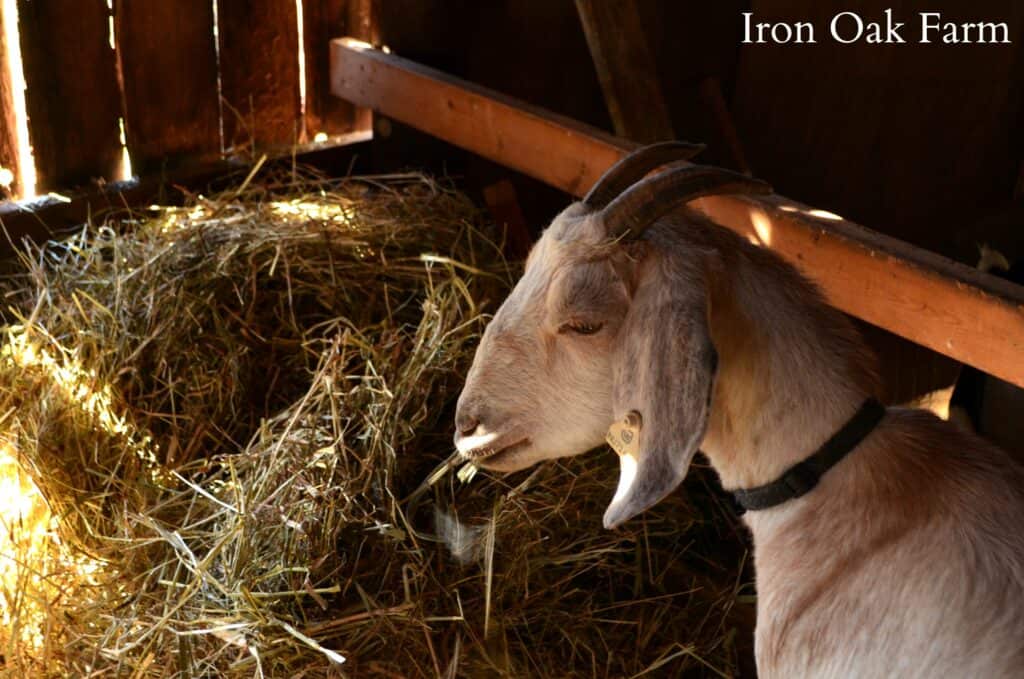


Pregnancy trance
When our girls are getting closer to their time many of them go into what we call the "pregnancy trance". They sort of zone out and their eyes glaze over. It's sometimes subtle to notice, but if you're around your goats enough you may notice that they have a sort of day dreamy look to them.
Usually whenever we enter our barn our girls jump up and beg for treats and grain. You might notice that your goats stay laying and are more reluctant to move when prompted.
If your goat is experiencing multiple symptoms from the list above, then her time is coming soon. When our goats are in this stage, we check them every 2 hours. Active labor can come fast at this point.
Getting closer
As your goat gets close you may begin to see signs of heavier discomfort. Though it can be hard to watch, it is natural. Respect your doe's needs and give her some extra space if she seems standoffish. Keep her stress levels low. This is also a good time to double-check all your supplies and make sure you have everything ready. (Check my post Goat Kidding Kit: 20 Things You Might Need)
You can tell if your goat is getting closer to labor if she is:
- rapid breathing
- teeth grinding (a sign of discomfort in goats)
- laying down and getting back up
- resting forehead against walls or fences
- a wave effect across the side of her abdomen
- discharge is present, may be clear or opaque
- swollen vulva
- tail ligaments softening (see below)
- arching back and tail (contractions see below)
How to check your goat's tail ligaments for signs of labor
As your goat gets closer to delivery, her tail bone ligaments will loosen to allow the baby to be delivered. If you feel a goat that is not in labor she will have two tight ligaments that run from the lower spine to either side of the base of the tail. They should feel like firm bands about the size of a pencil. As she goes into labor, these ligaments will soften and eventually sink. You should be able to gently place your thumb and finger in a circle around the tailbone of a goat that is ready to kid.
How to identify goat contractions during labor
Contractions can start several hours before birth. The goat will stiffen her legs, lower her tail, arch her back, then lower her back and raise her tail back up. You will notice that the vulva contracts along with the contraction.
Active labor
If I witness any of the signs below on a barn check, then I stay in the barn because delivery will be at any time. You can tell that your goat is in active labor if she is:
- leaking from the vulva, or loosing her plug. The discharge will start out clear and will become more milky and opaque as she gets ready to kid. You may also see traces of blood.
- vagina lengthening
- moaning, grunting and heavy panting
- early pushing
- increase in frequency of contractions
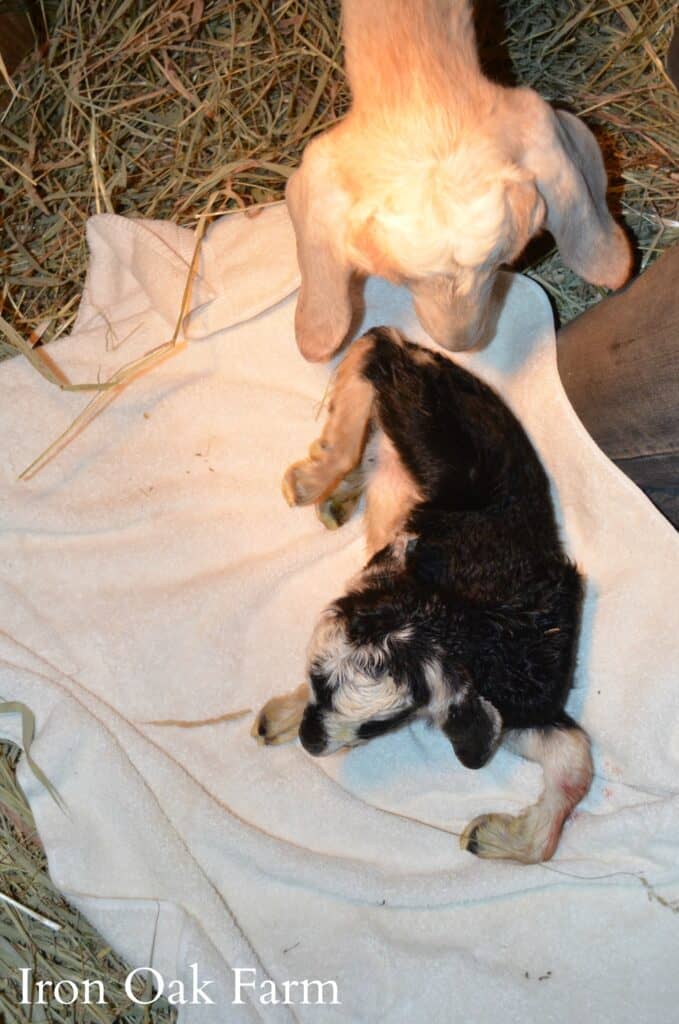


Delivery
Some goats stand through delivery, others will lay down. Often your goat will continue eating throughout the delivery process.
Her pushes will be longer and she might grunt or cry out. Our Nubians are particualrily loud during labor. As her pushes continue you will begin to see the bubble appear. This is the amniotic membrane. This membrane can stay in tact or it may burst. You will see it extend out with each push and then contract in slightly as she rests.
As the baby prograsses, if everything is as it should be you will see two tiny hooves followed by a tiny nose. After the head is delivered I will break the amniotic sack if it hasn't broken already, to ease the labor. I also clear the nose and mouth. From here out, delivery should progress rapidly. Usually after one last, big push, the baby comes sliding out all in one swoosh.
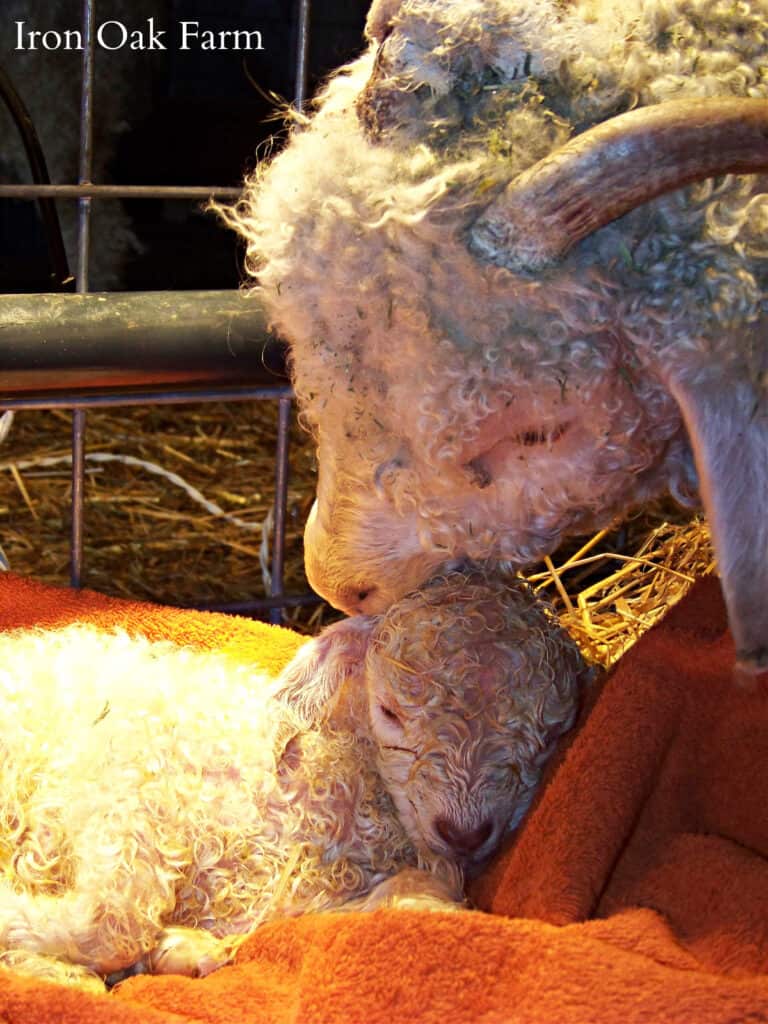


If you are assisting the doe, bring the baby up to her face immediately after it's delivered. The doe needs to smell it and clean it to create that maternal bond. As the doe licks, make sure the kid's airpassages are clear.
Check out my next post coming soon on Goat After Care for Mom and Her Newborn Kids
Pin it for later!
